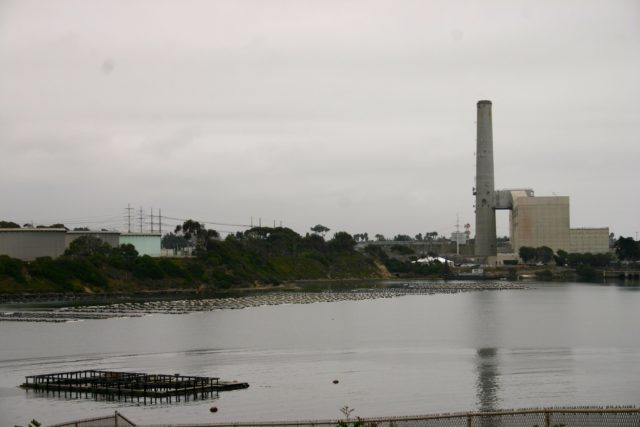
Here are a few factoids to contemplate as we head into 2019:
• In the past dozen years, Colorado’s population has grown by about 1 million people (from 4.7 million from 5.7 million).
• With the exception of Hawaii, Colorado is the only state in the country that has no rivers flowing into it. All Colorado rivers flow out of the state.
• In case you haven’t noticed, there’s a drought going on in the West.
• Water is still the preferred drink of 10 out of 10 Coloradans.
So maybe it’s time to give some thought as to where Colorado could find some additional water, especially if it wants to continue growing. Which, self-evidently, it does.
A few years ago I suggested that Colorado could get some additional water by building desalination plants on the California coast and swapping their output for the Colorado River water that is currently consumed by Los Angeles and other Southern California cities. (See “How to increase Colorado’s water supply,” Feb. 6, 2014.)
Here’s the arithmetic behind the proposal:
In a “normal” year — a year with “normal” rain- and snowfall — about 8.66 million acre-feet of water flow out of Colorado toward the Pacific Ocean, almost all of it via the Colorado River and its tributaries. This represents more than half of the total amount of water in the Colorado River Basin in a “normal” year (about 16.5 million acre-feet). Under the Colorado River Compact of 1922, which allocated the water among the seven states in the Colorado River Basin and Mexico, Colorado currently gets to keep 3.86 million acre-feet of the 16.5 million. California’s allocation of Colorado River water is 4.4 million acre-feet.
The bad news here is that a “normal” year under the Colorado River Compact was defined using flow data from 1905 to 1922, which, according to the U.S. Geological Survey, turned out to be “the highest long-term annual flow volume in the 20th century.” So lower-than-“normal” flow rates are a common occurrence, even without climate change creating a new normal.
Could desalination plants produce enough water to make it worth-while for Colorado to cut a deal with California? The world’s largest seawater reverse osmosis desalination plant is the Sorek plant, located about 10 miles south of Tel Aviv in Israel. Its annual output is 150 million cubic meters of drinking-quality water, or 121,600 acre-feet. The output of two such plants could produce enough water to nearly fill Dillon Reservoir (capacity 257,000 acre-feet), the Denver Water Board’s largest. Six of them could fill all of Denver’s reservoirs (which hold about 658,000 acre-feet) and Boulder’s (which hold about 26,000 acre-feet) with some to spare.
The plant was built in less than three years. Construction costs came to about $400 million.
The prospect of building big desalination plants in the U.S. at $400 million a unit is minuscule, of course. The Israeli company that built the Sorek plant also built a plant in Carlsbad, California, less than a third the size (but still the biggest in the Western Hemisphere). It took 20 years to get the approvals and ended up costing $1 billion.
A swap of Colorado-funded desalination plants for part of California’s Colorado River water allocation could have major attractions for both states. Desalinated water is too expensive for agricultural use and municipal users still pay a premium for it, but it is a drought-proof resource. That should be a real attraction for California, where drought is becoming the new normal.
Colorado would get a big addition to its water resources out of the deal. While the water rights obtained in the swap wouldn’t be as drought-proof as desalinated water, the water from them would be cheap enough for ag use as well as municipal use.
And there’s a reason for Colorado to start pursuing a desalination deal with California that didn’t exist five years ago — folks in Arizona are getting the same idea.
Three weeks ago an op-ed appeared in the Arizona Republic calling on Arizona’s congressional delegation “to champion a 21st-century CAP (Central Arizona Project) with the creation of a large-scale federally funded, Western states desalination solution that will enable Californians to drink from the sea and reduce their draw on the Colorado River.”
(The Central Arizona Project, approved by Congress in the 1960s, allows Arizona to send up to 1.5 million acre-feet of its Colorado River allocation south to Phoenix and Tucson. The water enabled much of the state’s subsequent explosive growth.)
The op-ed was co-authored by Karen Fann and Rodney Glassman. Glassman is an attorney with a PhD in Arid Land Resource Sciences. Fann is the newly chosen president of the Arizona State Senate.
It wouldn’t be surprising if the Arizona congressional delegation, led by the state’s two new senators, Kyrsten Sinema and Martha McSally, accepted the challenge. Sinema narrowly defeated McSally in the November election to replace Jeff Flake. McSally was then appointed to fill the remainder of John McCain’s term.
Chances are both of them would welcome a chance to show some bipartisanship. In Arizona, bipartisanship starts at the water’s edge.
And they might get some support from California’s Democratic Senator Dianne Feinstein, who has turned into a champion for desalination in the past couple of years and is looking for federal support. She has a better chance of getting it if the other member states of the Colorado River Compact support it.
Colorado should take up this cause as well. If Colorado continues to grow at the rate it has in the recent past, it will add another million people by the end of 2030. If the state isn’t wise enough to control its growth, it should at least be responsible enough to provide enough water for it.
This opinion column does not necessarily reflect the views of Boulder Weekly.














